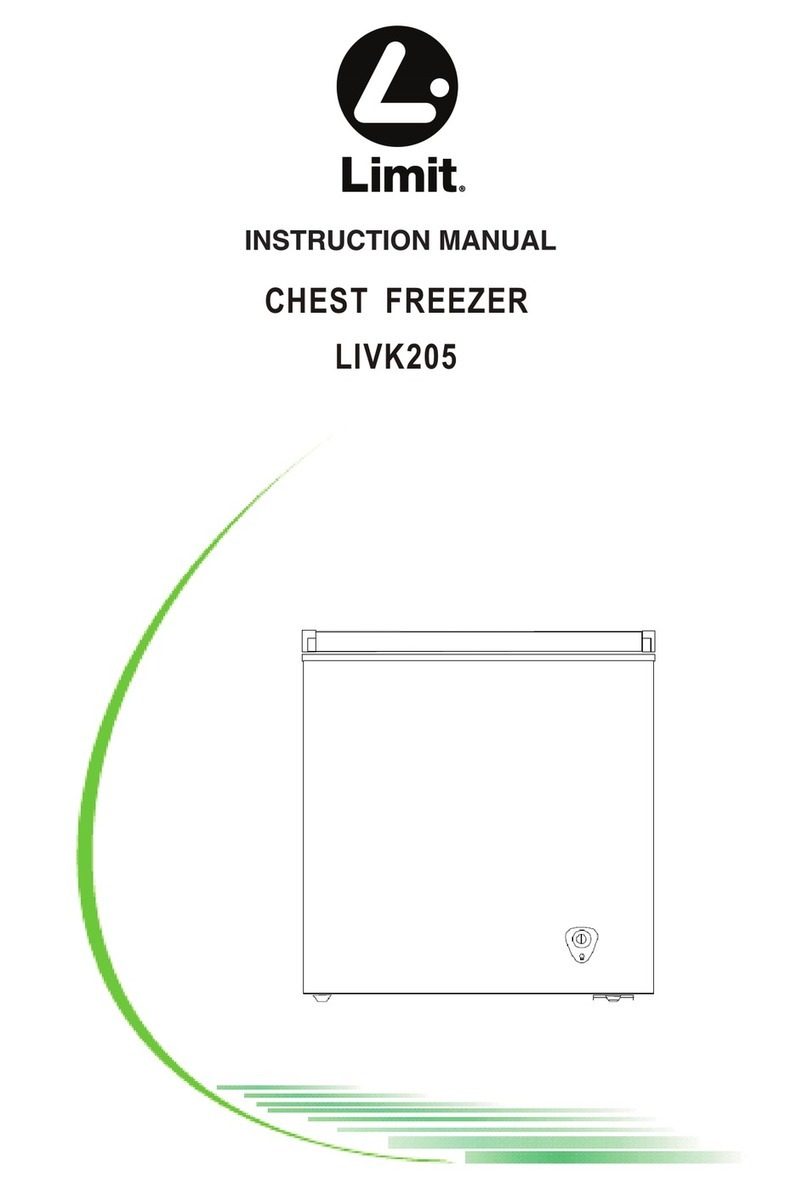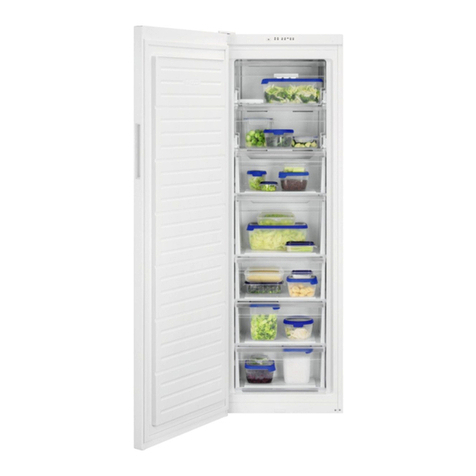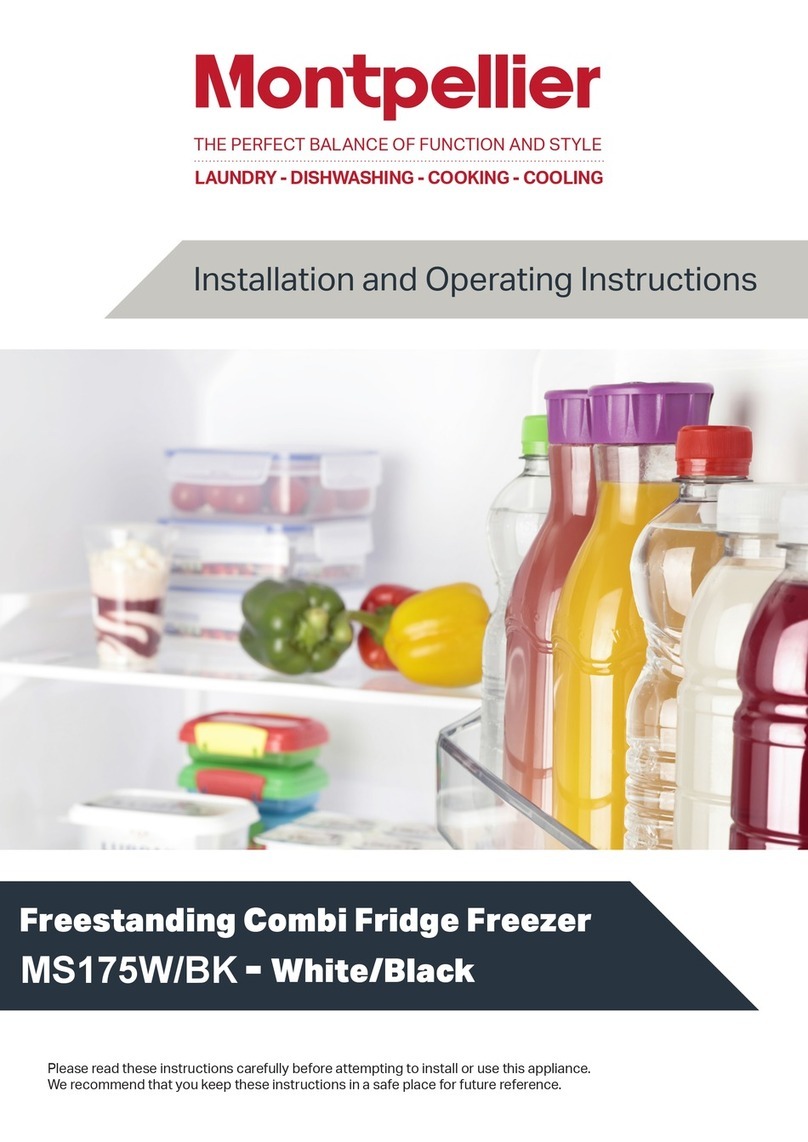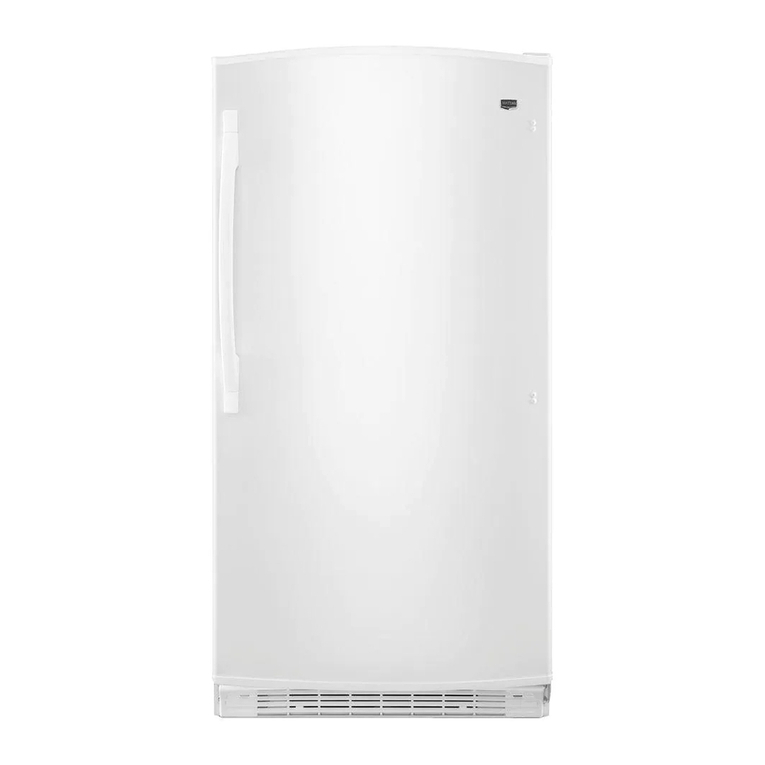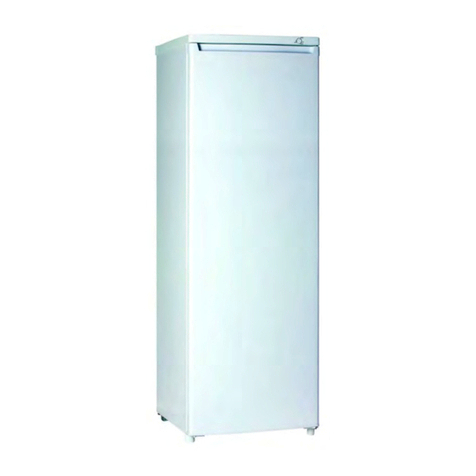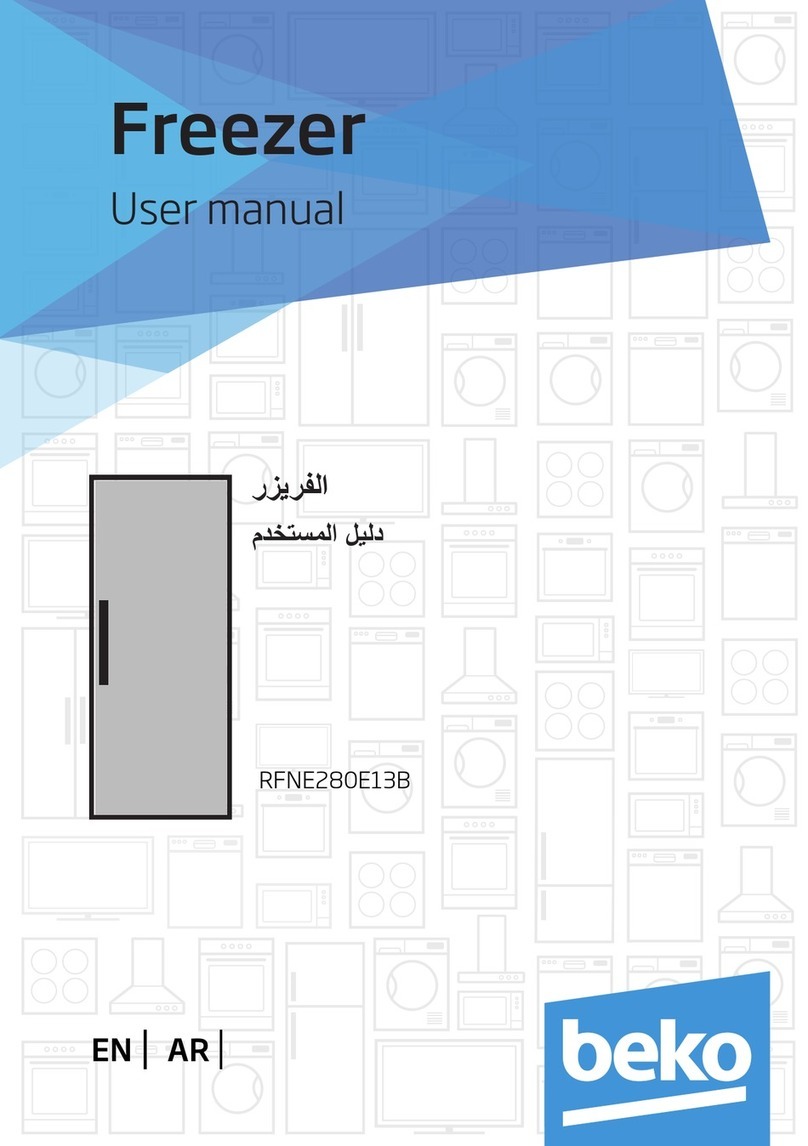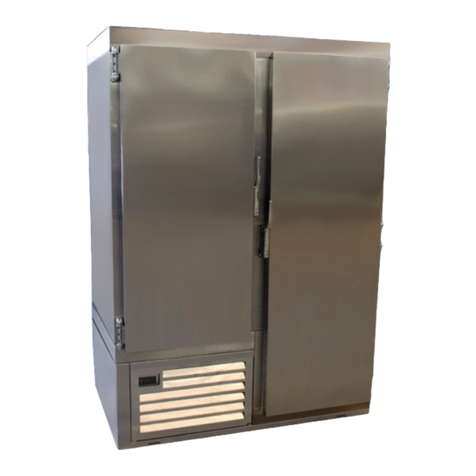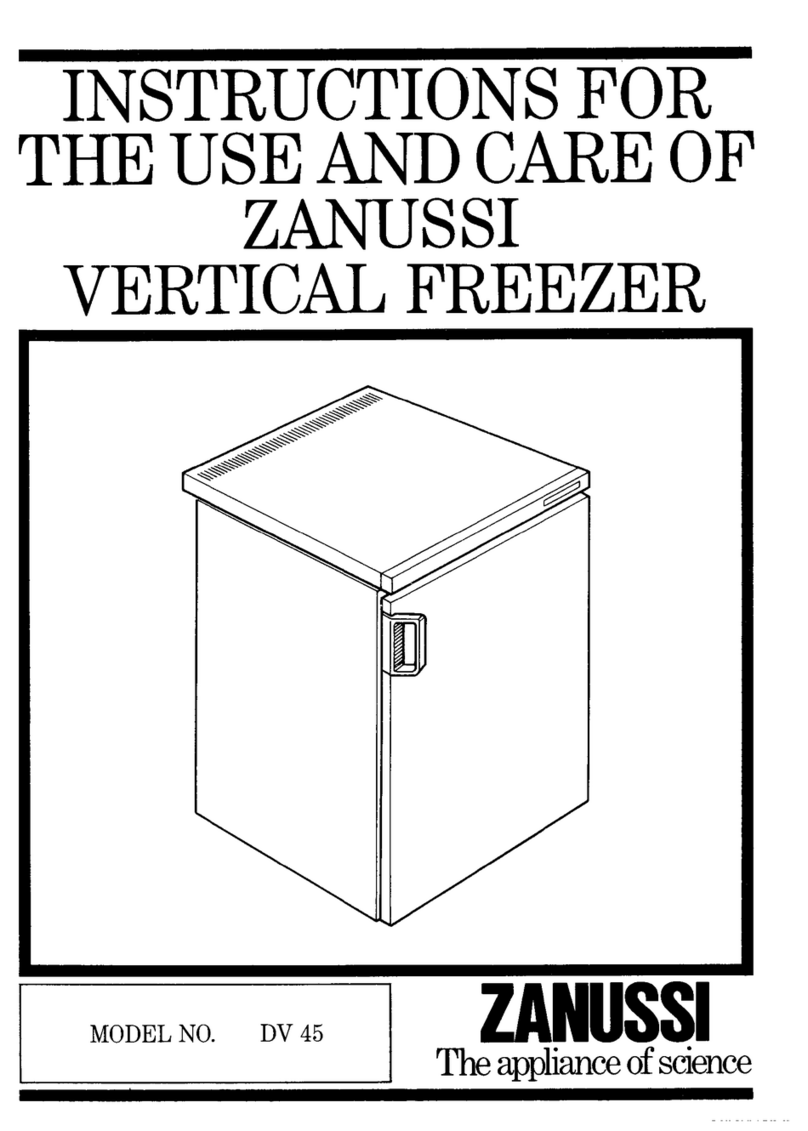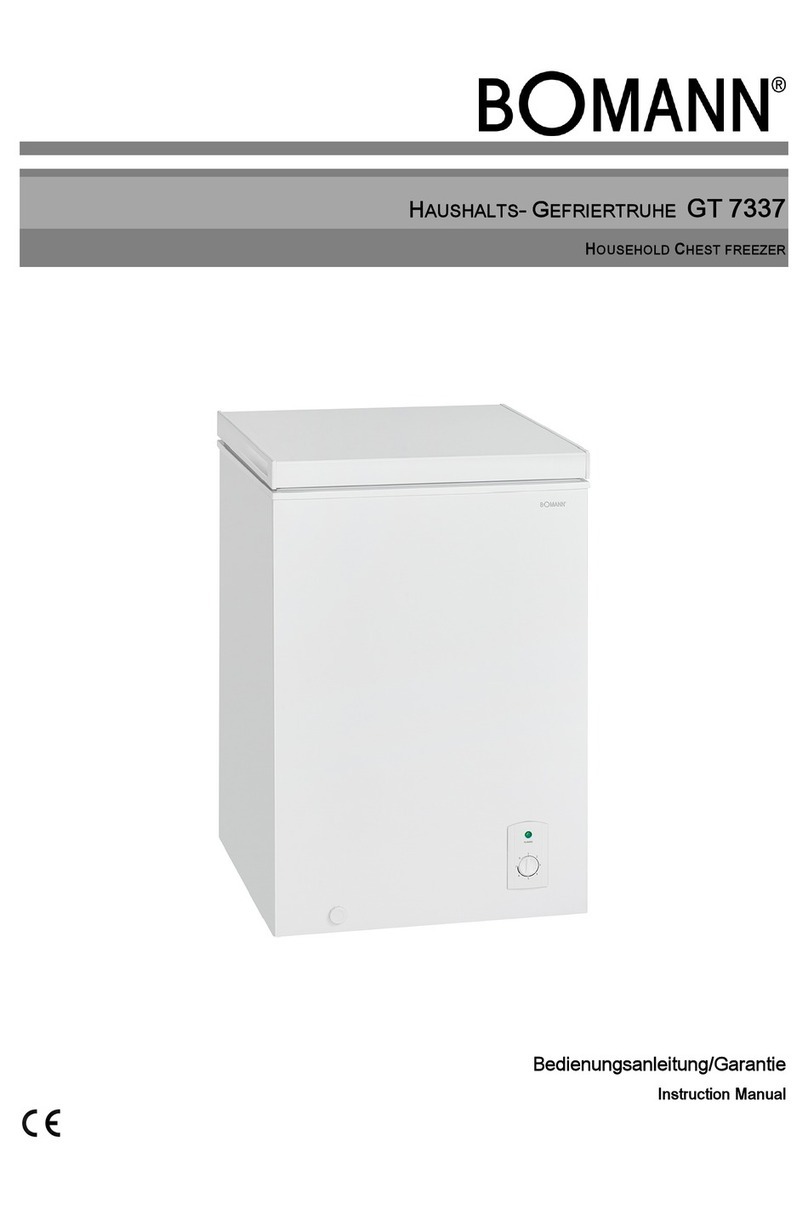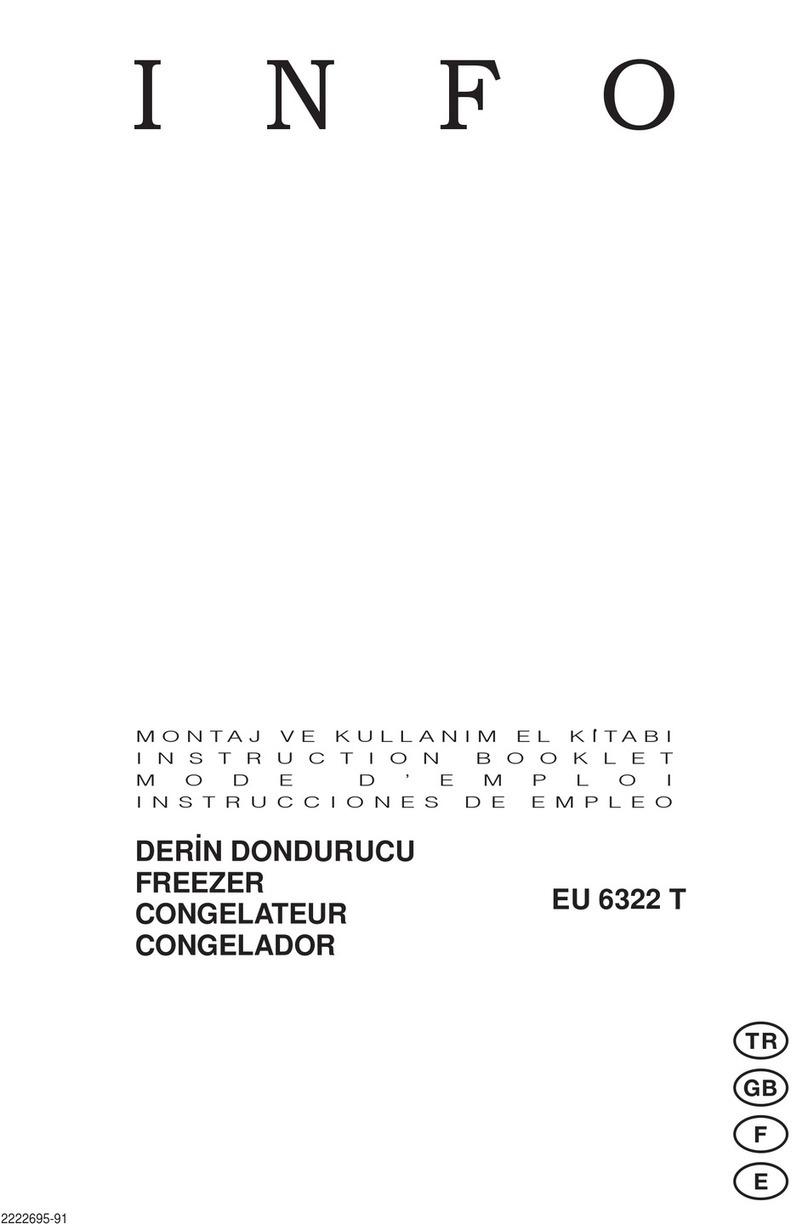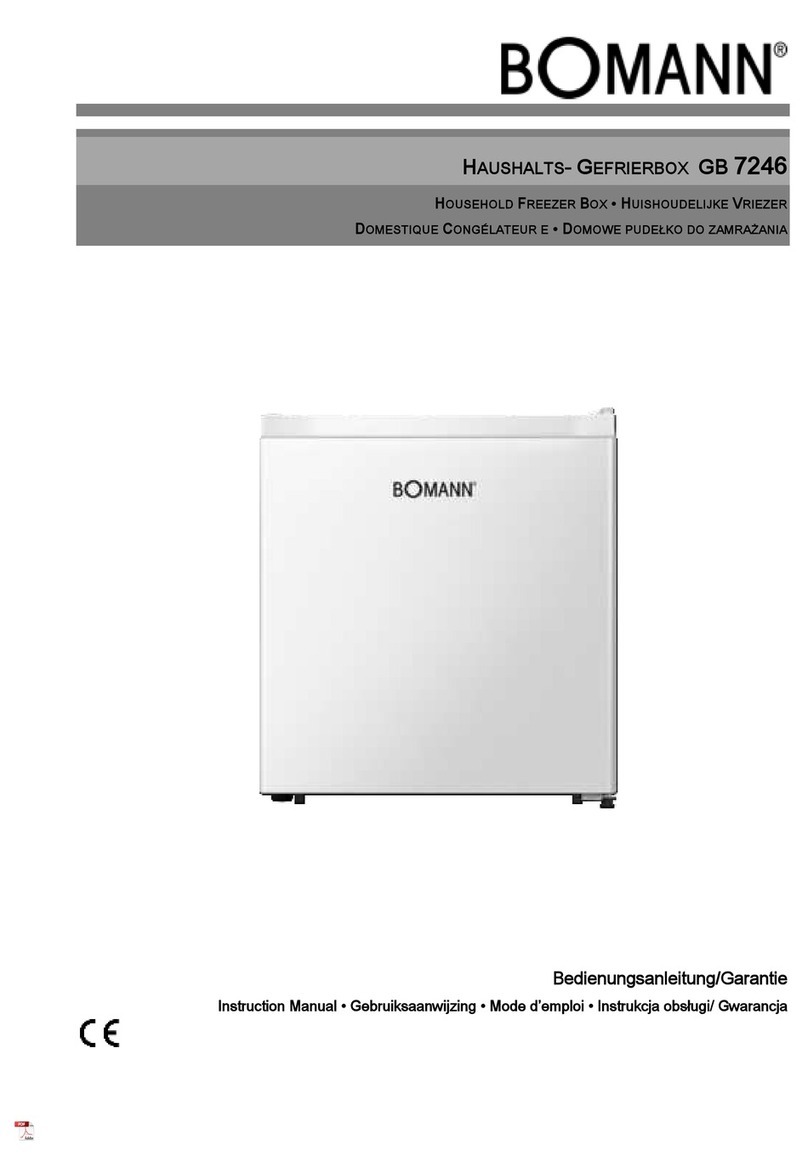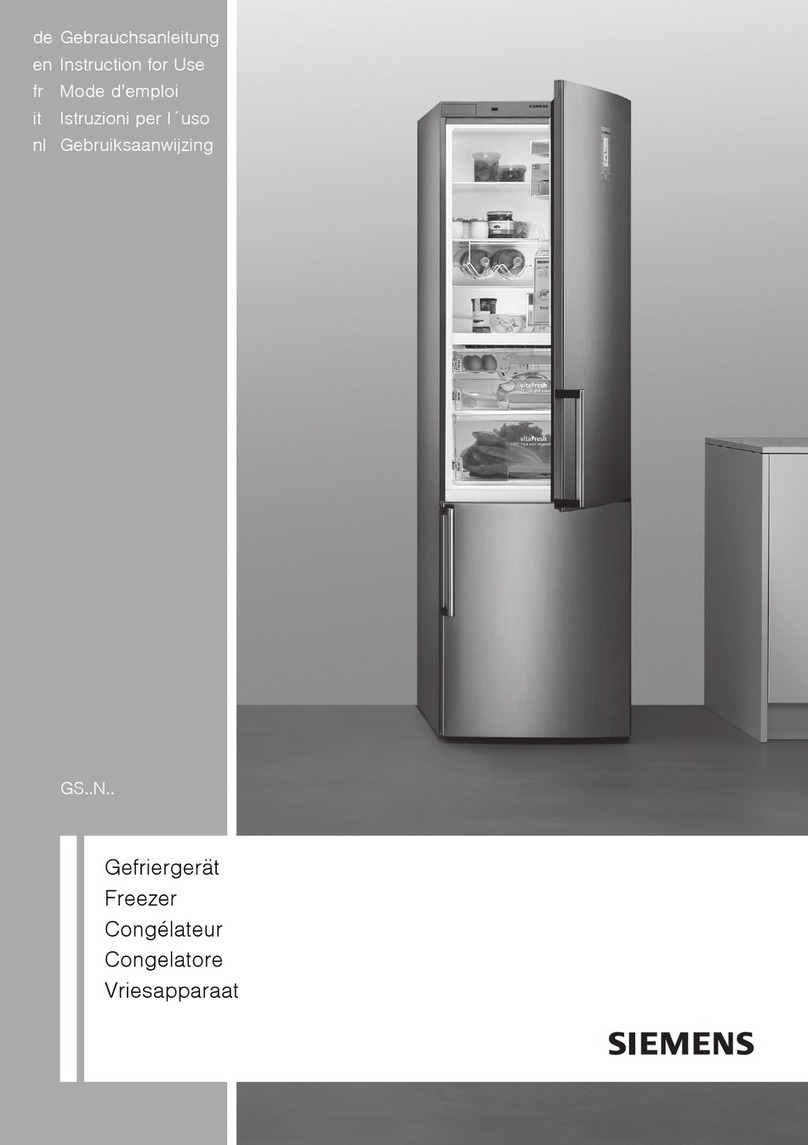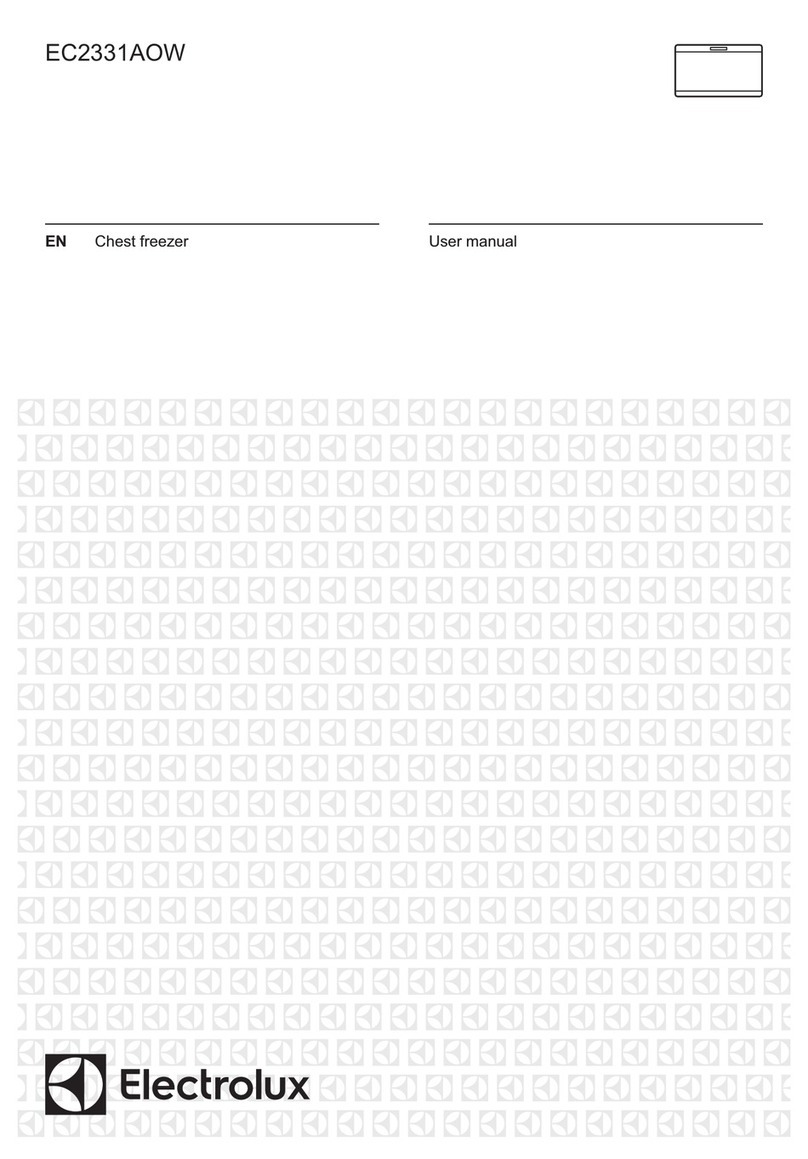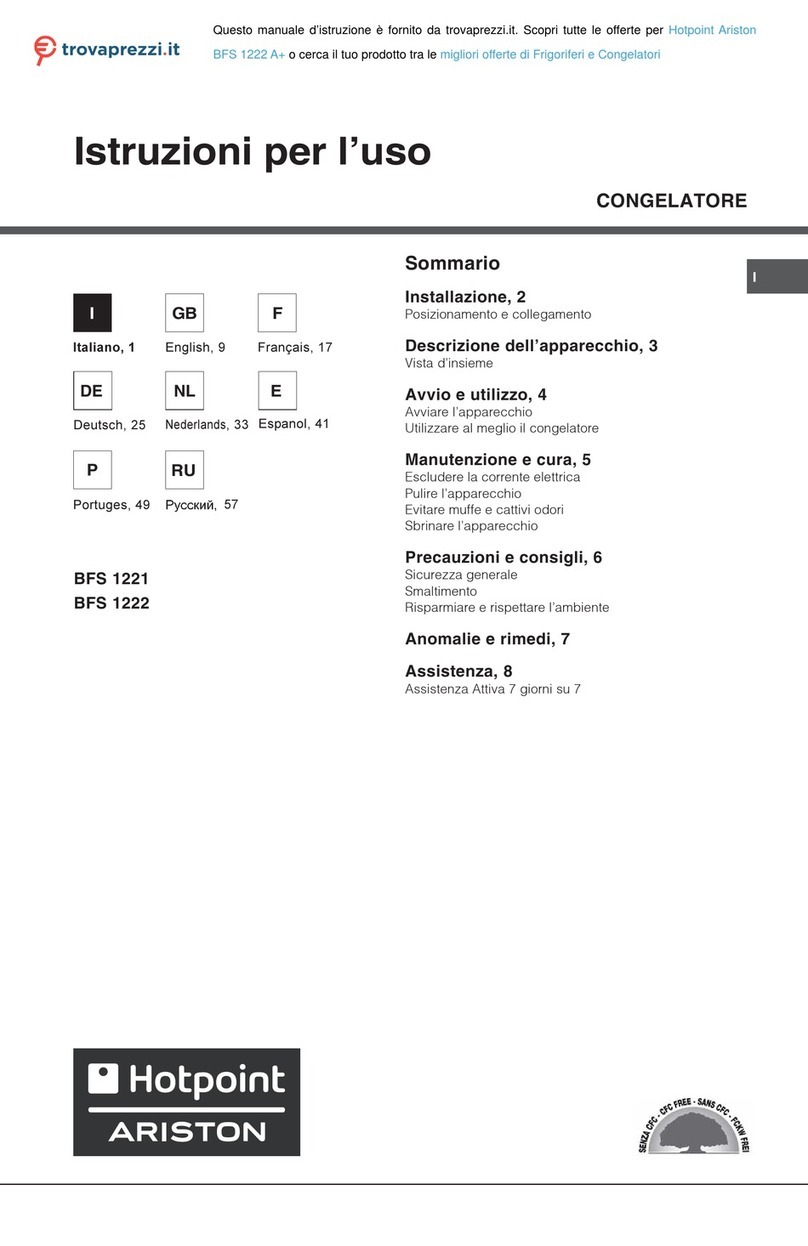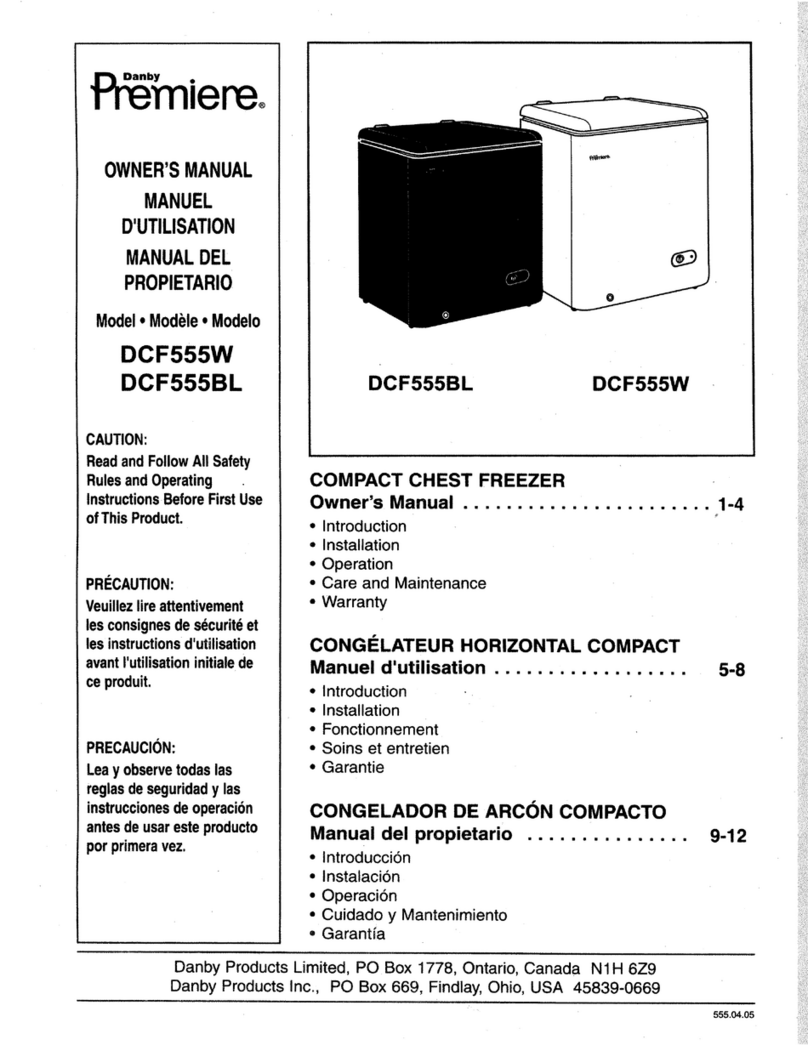STATESMAN SBS177X User manual

SBS177X
AMERICAN SIDE-BY-SIDE TOTAL NO FROST
FRIDGE FREEZER
Instruction Manual
Please read these instructions carefully before use and retain for future reference.
Before switching on your appliance – Always check for any damage that may have
been caused in transit.

2
CONTENTS
Important Safety Instructions ................................ 3-6
Product Overview ........................................................7
Installation.............................................................. 8-11
Operating Instructions ........................................ 12-16
- Using the Control Panel..................................... 12-13
- First Use...................................................................14
- Daily Use..................................................................14
- Accessories .............................................................15
- Temperature Setting Recommendation...................15
- Helpful Hints and Tips .............................................16
Cleaning and Maintenance.......................................17
Troubleshooting Guide..............................................18
Disposal Information.................................................19

3
SAFETY INSTRUCTIONS
• Intheinterestofyoursafetyandtoensurethecorrectuse,beforeinstallingandrst
using the appliance, read this user manual carefully, including its hints and warnings.
To avoid unnecessary mistakes and accidents, it is important to ensure that all people
using the appliance are thoroughly familiar with its operation and safety features. Save
these instructions and make sure that they remain with the appliance if it is moved or
sold, so that everyone using it through its life will be properly informed on appliance
use and safety.
Children and Vulnerable People Safety
• This appliance can be used by children aged from 8 years and above and persons with
reduced physical, sensory or mental capabilities or lack of experience and knowledge
if they have been given supervision or instruction concerning use of the appliance in a
safe way and understand the hazards involved.
• Children aged from 3 to 8 years are allowed to load and unload this appliance.
• Children should be supervised to ensure that they do not play with the appliance.
• Cleaning and user maintenance shall not be made by children unless they are aged
from 8 years and above and are supervised.
• Keepallpackagingwellawayfromchildren.Thereisriskofsuocation.
• If you are discarding the appliance pull the plug out of the socket, cut the connection
cable (as close to the appliance as you can) and remove the door to prevent children
playingwiththeapplianceandsueringelectricshockorgettinglockedinside.
• If this appliance featuring magnetic door seals is to replace an older appliance having
a spring lock (latch) on the door or lid, be sure to make that spring lock unusable
before you discard the old appliance. This will prevent the risk of anyone getting
trapped inside the appliance.
General Safety
WARNING! Keep ventilation openings, in the appliance enclosure or in the built-in
structure, clear of obstruction.
WARNING! Do not use mechanical devices or other means to accelerate the
defrosting process, other than those recommended by the manufacturer.
WARNING! Do not damage the refrigerant circuit.
WARNING! Do not use other electrical appliances (such as ice cream makers)
inside of refrigerating appliances, unless they are approved for this purpose by the
manufacture.
WARNING! Do not touch the light bulb if it has been on for a long period of time
because it could be very hot.1)
WARNING! When positioning the appliance, ensure the supply cord is not trapped
or damaged.
WARNING! Do not locate multiple portable socket-outlets or portable power
suppliers at the rear of the appliance.
• Donotstoreexplosivesubstancessuchasaerosolcanswithaammablepropellant
in this appliance. The refrigerant isobutane (R-600a) is contained within the refrigerant
1) If there is a light in the compartment.

4
circuit of the appliance, a natural gas with a high level of environmental compatibility,
whichisneverthelessammable.
• During transportation and installation of the appliance, be certain that none of the
components of the refrigerant circuit become damaged
-avoidopenamesandsourcesofignition
- thoroughly ventilate the room in which the appliance is situated
• Itisdangeroustoalterthespecicationsormodifythisproductinanyway.Anydamageto
thecordmaycauseashortcircuit,reand/orelectricshock.Thisapplianceisintendedto
be used in household and similar applications such as:
-stakitchenareasinshops,ocesandotherworkingenvironments;
-farmhousesandbyclientsinhotels,motels,andotherresidentialtypeenvironments;
-bedandbreakfasttypeenvironments;
- catering and similar non-retail applications.
WARNING! Any electrical components (plug, power cord, compressor etc.) must be
replacedbyacertiedserviceagentorqualiedservicepersonnel.
WARNING! The light bulb supplied with this appliance is a special use light bulb usable
only with the appliance supplied. This special use light bulb is not usable for domestic
lighting. 1)
• Power cord must not be lengthened.
• Makesurethatthepowerplugisnotsquashedordamagedbythebackoftheappliance.A
squashedordamagedpowerplugmayoverheatandcauseare.
• Make sure that you can access the mains plug of the appliance.
• Do not pull the mains cable.
• If the power plug socket is loose, do not insert the power plug. There is a risk of electric
shockorre.
• You must not operate the appliance without the light bulb.
• This appliance is heavy. Care should be taken when moving it.
• Donotremovenortouchitemsfromthefreezercompartmentifyourhandsaredamp/wet,
asthiscouldcauseskinabrasionsorfrost/freezerburns.
• Avoid prolonged exposure of the appliance to direct sunlight.
Daily Use
• Do not put anything hot on the plastic parts in the appliance.
• Do not place food products directly against the rear wall.
• Frozen food must not be re-frozen once it has been thawed out. 2)
• Store pre-packed frozen food in accordance with the frozen food manufacturers instructions. 2)
• The Manufacturer’s appliance storage recommendations should be strictly adhered to. Refer to
the following instructions for safe storage of food:
-Donotplacecarbonatedorzzydrinksinthefreezercompartmentasitcreatespressureon
the container, which may cause it to explode, resulting in damage to the appliance. 2)
- Ice lollies can cause frost burns if consumed straight from the appliance. 2)
-Openingthedoorforlongperiodscancauseasignicantincreaseofthetemperatureinthe
compartments of the appliance.
- Regularly clean surfaces that can come into contact with food and accessible drainage
systems.Cleanwatertanksiftheyhavenotbeenusedfor48h;ushthewatersystem
connected to a water supply if water has not been drawn for 5 days.
1) If there is a light in the compartment..
2) If there is a freezer compartment
3) If there is a fresh-food storage compartment

5
-Storerawmeatandshinsuitablecontainersintherefrigerator,sothatitisnotincontactwith
or drips onto other food.
- Two-star frozen-food compartments (if they are presented in the appliance) are suitable for
storing pre-frozen food, storing or making ice cream and making ice cubes.
- One-, two- and three-star compartments (if they are presented in the appliance) are not suitable
for the freezing of fresh food.
-Iftheapplianceisleftemptyforlongperiods,switcho,defrost,clean,dryandleavethedoor
open to prevent mould developing within the appliance.
Care and Cleaning
• Beforemaintenance,switchotheapplianceanddisconnectthemainsplugfromthemains
socket.
• Do not clean the appliance with metal objects.
• Do not use sharp objects to remove frost from the appliance. Use a plastic scraper. 2)
• Regularly examine the drain in the refrigerator for defrosted water. If necessary, clean the drain. If
the drain is blocked, water will collect in the bottom of the appliance. 3)
Installation
Important! For electrical connection carefully follow the instructions outlined below:
• Unpack the appliance and check if there are damages on it. Do not connect the appliance if it
is damaged. Report possible damages immediately to the retailer you purchased the appliance
from. In that case retain all packaging.
• Itisadvisabletowaitatleastfourhoursbeforeconnectingtheappliancetoallowtheoiltoow
back in the compressor.
• Ensure there is adequate air circulation around the appliance to prevent the unit from
overheating.Toachievesucientventilation,followtheinstructionsoutlinedinthe‘Location’
sectionofthe‘Installation’instructionsonpage11.
• Wherever possible the spacers of the product should be against a wall to avoid touching or
catching warm parts (compressor, condenser) to prevent possible burns.
• The appliance must not be located close to radiators or cookers.
• Make sure that the mains plug is accessible after the installation of the appliance.
Service
• Anyelectricalworkrequiredforservicingoftheapplianceshouldbecarriedoutbyaqualied
electrician or competent person.
• This product must be serviced by an authorized Service Agent, and only genuine spare parts
must be used.
Energy Saving
• Don’t put hot food in the appliance;
• Don’t pack food close together as this prevents air circulation;
• Make sure food doesn’t touch the back of the compartment(s);
• Ifelectricitygoeso,don’topenthedoor(s);
• Don’t open the door(s) frequently;
• Don’t keep the door(s) open for prolonged periods of time;

6
• Don’t set the thermostat on exceeding cold temperatures;
• All accessories, such as drawers, shelf balconies, should be kept there for lower energy
consumption.
Environment Protection
This appliance does not contain gasses which could damage the ozone layer, in either its
refrigerant circuit or insulation materials. The appliance shall not be discarded together with the
urbanrefuseandrubbish.Theinsulationfoamcontainsammablegases.Theapplianceshallbe
disposed of in accordance with the appliance disposal regulations outlined by your local authorities.
Avoid damaging the cooling unit, especially the heat exchanger.
The materials used on this appliance marked by the symbol are recyclable.
The symbol on the product or on its packaging indicates that this product may not be
treated as household waste. Instead, it should be taken to the appropriate collection point
for the recycling of electrical and electronic equipment.
By ensuring this product is disposed of correctly, you will help prevent potential negative
consequences for the environment and human health, which could otherwise be caused by
inappropriate waste handling of this product. For more detailed information about recycling of this
product, please contact your local council, your household waste disposal service, or the retailer
where you purchased the product.
Packaging Materials
The materials with the symbol are recyclable. Dispose the packaging in a suitable collection
container to recycle it.
Disposal of the Appliance
1. Disconnect the mains plug from the mains socket.
2. Cutothemainscableanddiscardit.
WARNING! During use, service and disposal the appliance, please pay attention to
the symbol shown on the left, which is located on the rear of appliance (rear panel or
compressor)andwithyellowororangecolor.It’stheriskofrewarningsymbol.There
areammablematerialsintherefrigerantpipesandcompressor.Ensuretheappliance
isnowherenearanyresourcesduringuse.

7
PRODUCT OVERVIEW
Freezer Shelves Fridge Shelves
Freezer Door
Shelves
Freezer Drawer
Covers
Freezer Drawers
LevellingFeet
Fridge Door
Shelves
Covers
for Fridge
Vegetable
Containers
Fridge
Vegetable
Containers

8
INSTALLATION
Remove the Doors
Toolrequired:Philips screwdriver, at headed screwdriver.
• Ensure the unit is unplugged and empty.
• To take the door o, it is necessary to tilt the unit backwards. You should rest the unit on something
solid so that it will not slip during the door removing process.
• All parts removed must be saved to do the reinstallation of the door.
• Do not lay the unit at as this may damage the coolant system.
• SAFETY ADVICE: It’s better that 2 people handle the unit during assembly to prevent risk of
injury.
1. Unscrew hinge cover using a Philips screwdriver.
2. Disconnect the harness.
3. Unscrew top hinge.

9
4. Lift the door and place it on a soft pad. Then
remove the other door using the same process.
5. Unscrew bottom hinges.
6. After the appliance is positioned in the desired location, reinstall the doors using the removal
instructions in reverse

10
SpaceRequirement
• Keep enough space for the doors to open.
• Keep at least 50mm gap around the two sides and back of the appliance.
Leveling the Refrigerator
• Clockwise rotate feet to heighten them by hand
• Anti-clockwise rotate feet to lower them by hand
Doors

11
Positioning
Install this appliance in a location where the ambient temperature corresponds to the climate class
indicated on the rating plate of the appliance.
the relevant refrigerating appliance climate classes are as follows:
- Subnormal (SN): this refrigerating appliance is intended to be used at ambient temperatures ranging
from 10 °C to 32 °C;
- Normal (N): this refrigerating appliance is intended to be used at ambient temperatures ranging from 16
°C to 32 °C;
- Subtropical (ST): this refrigerating appliance is intended to be used at ambient temperatures ranging
from 16 °C to 38 °C;
- Tropical (T): this refrigerating appliance is intended to be used at ambient temperatures ranging from 16
°C to 43 °C
Location
The appliance should be installed well away from sources of heat such as radiators, boilers, direct
sunlight etc. Ensure that air can circulate freely around the back of the cabinet. To ensure best
performance, if the appliance is positioned below an overhanging wall unit, the minimum distance
between the top of the cabinet and the wall unit must be at least 100mm. Ideally, however, the appliance
should not be positioned below overhanging wall units. Accurate leveling is ensured by one or more
adjustable feet at the base of the cabinet.
This refrigerating appliance is not intended to be used as a built-in appliance;
WARNING!Itmustbepossibletodisconnecttheappliancefromthemainspowersupply;the
plug must therefore be easily accessible after installation.
Electrical Connection
Beforepluggingin,ensurethatthevoltageandfrequencyshownontheratingplate
corresponds to your domestic power supply. The appliance must be earthed. The power
supply cable plug is provided with a contact for this purpose.

12
OPERATING INSTRUCTIONS
Using the Control Panel
1
3
A
C
7
6
2
5
4
B
D
Buttons
A - Press to adjust temperature of freezer compartment (left side) from -14°C to -22°C
B - Press to adjust temperature of fridge compartment (right side) from 2°C to 8°C and switch o the
refrigerator compartment.
C - Press to select running mode from SMART, ECO, SUPER COOLING, SUPER FREEZING and
USER’S SETTING (no symbol in display).
D - Press LOCK 3s. button and hold for 3 seconds to lock other three buttons
Press it and hold for 1 second to unlock other three buttons
Display
1. SMART mode - The refrigerator sets the temperature of two compartments automatically according
to the internal temperature and ambient temperature.
2. ECO mode - The refrigerator runs in lowest energy consumption setting
3. SUPER COOLING mode - Cools the fridge compartment to the lowest possible temperature. After
approx. 2.5 hours, the temperature setting would be restored to the previous user setting mode.
4. SUPER FREEZING mode - Cools the freezer compartment to the lowest possible temperature.
After approx. 50 hours, the temperature setting would be restored to the previous user setting mode.
Tip: It’s better to switch on SUPER FREEZING mode 24 hours ahead before large amount of food
is placed in freezer compartment
5. LOCK - The symbol will light on if buttons are locked.
6. Display the setting temperature of freezer compartment.
7. Display the setting temperature of fridge compartment

13
Mode Indicator Light Freezer Temperature Display Fridge Temperature Display
Smart The temperature display for freezer and fridge will change based
on ambient temperature.
ECO -15°C +8°C
Super Cooling No Change +2°C
Super Freezing -25°C No Change
NOTES:
ECO mode: Select this mode when you want to save power.
Super Cooling mode: This mode allows you to cool foods quickly and will be automatically deactivated
after 2.5 hours of operation.
Super Freezing mode: This mode allows you to freeze foods quickly and will be automatically
deactivated after 50 hours of operation.
Door Open Alarm
When any door is left open or not closed completely for about 90 seconds, the appliance will sound an
alarm. Close the fridge door then the alarm will stop.
If the door is not fully closed, then the alarm will sound every 35 seconds until the doors are
fully closed. If doors are open for 10 continuous minutes without closing, the internal LED
lightwouldbeturnedoautomatically.
Child Safety Lock
This function is designed to prevent children from operating the appliance
• To activate the function, press and hold for about 3 seconds. The lock indicator light
will illuminate indicating the safety lock function is activated.
• To deactivate the function, press and hold for about 1 second. The unlock indicator light
will illuminate indicating the safety lock function is deactivated.

14
First Use
Cleaning the Interior
Before using the appliance for the rst time, wash the interior and all internal accessories with lukewarm
water and some neutral soap so as to remove the typical smell of a brand new product, then dry
thoroughly.
Important! Do not use detergents or abrasive powders, as these will damage the nish
Daily Use
Position dierent food in dierent compartments according to the below table:
Refrigerator compartments Type of food
Door or balconies of fridge compartment
• Foods with natural preservatives, such as
jams,juices, drinks, condiments.
• Do not store perishable foods.
Crisper drawer (salad drawer)
• Fruits, herbs and vegetables should be placed
separately in the crisper bin.
• Do not store bananas, onions, potatoes, garlic
in the refrigerator
Fridge shelf – middle • Dairy products, eggs
Fridge shelf – top • Foods that do not need cooking, such as
ready-to-eat foods, deli meats, leftovers.
Freezer drawer(s)/shelf
• Foods for long-term storage.
• Bottom drawer/shelf for raw meat, poultry,
sh. Middle drawer/shelf for frozen vegetables,
chips. Top drawer/shelf for ice cream, frozen
fruit, frozen baked goods
Thawing
Deep-frozen or frozen food, prior to being used, can be thawed in the fridge compartment or at room
temperature, depending on the time available for defrosting.
Small pieces may even be cooked if still frozen, directly from the freezer. In this case, cooking will take
longer.

15
Accessories
Movable Shelves
The walls of the refrigerator compartment are equipped with a series of
runners so that the shelves can be positioned as desired.
Positioning the Door Balconies
To permit storage of food packages of various sizes, the door balconies
can be placed at dierent heights. To make these adjustments, proceed
as follows: gradually pull the balcony in the direction of the arrows until it
comes free, then reposition as required.
Temperature Setting Recommendation
Environment Temperature Temperature Setting
Summer
Fridge set on 4℃
Freezer set on -18℃
Normal
Fridge set on 4℃
Freezer set on -18℃
Winter
Fridge set on 4℃
Freezer set on -18℃
Information above give users recommendation of temperature setting.
Impact on Food Storage
• Under Recommended setting, the best storage time of fridge is no more than 3 days.
• Under Recommended setting, the best storage time of freezer is no more than 1 month.
• The best storage time may reduce under other settings.

16
Helpful Hints and Tips
Hints for Freezing
To help you make the most of the freezing process, here are some important hints:
• The maximum quantity of food which can be frozen in 24 hrs. is shown on the rating plate;
• The freezing process takes 24 hours. No further food to be frozen should be added during this
period; only freeze top quality, fresh and thoroughly cleaned, foodstus;
• Prepare food in small portions to enable it to be rapidly and completely frozen and to make it
possible subsequently to thaw only the quantity required;
• Wrap up the food in aluminium foil or polythene and make sure that the packages are airtight; do not
allow fresh, unfrozen food to touch food which is already frozen, thus avoiding a rise in temperature
of the latter;
• Lean foods store better and longer than fatty ones; salt reduces the storage life of food;
• Water ices, if consumed immediately after removal from the freezer compartment, can possibly
cause the skin to be freeze burnt;
• It is advisable to show the freezing in date on each individual pack to enable you to keep tab of the
storage time.
Hints for Storage of Frozen Food
To obtain the best performance from this appliance , you should:
• Make sure that the commercially frozen foodstus were adequately stored by the retailer;
• Be sure that frozen foodstus are transferred from the food store to the freezer in the shortest
possible time;
• Do not open the door frequently or leave it open longer than absolutely necessary. Once defrosted,
food deteriorates rapidly and cannot be refrozen;
• Do not exceed the storage period indicated by the food manufacturer.
Hints for Refrigeration
Useful hints:
• Do not store warm food or evaporating liquids in the refrigerator
• Make (all types): wrap in polythene bags and place on the glass shelves above the vegetable drawer
• For safety , store in this way only one or two days at the most.
• Cooked foods , cold dishes, etc ...: these should be covered and may be placed on any shelf.
• Fruit and vegetables: these should be thoroughly cleaned and placed in the special drawer(s)
provided. butter and cheese: these should be placed in special airtight containers or wrapped in
aluminum foil or polythene bags to exclude as much air as possible. Bananas, potatoes, onions and
garlic, if not packed, must not be kept in the fridge.
• Milk bottle: these should have a cap and should be stored in the balconies on the door.

17
CLEANING AND MAINTENANCE
For hygiene reasons the appliance interior, including interior accessories, should be cleaned regularly.
CAUTION! The appliance may not be connected to the mains during cleaning. Danger
ofelectricalshock!Beforecleaningswitchtheapplianceoandremovetheplug
fromthemains,orswitchoorturnoutthecircuitbreakerorfuse.Nevercleanthe
appliance with a steam cleaner. Moisture could accumulate in electrical components,
danger of electrical shock! Hot vapors can lead to the damage of plastic parts. The
appliance must be dry before it is placed back into service.
Important! Ethereal oils and organic solvents can attack plastic parts, e.g. lemon juice or the juice from
orange peel, butyric acid, cleanser that contain acetic acid.
• Do not allow such substances to come into contact with any part of the appliance.
• Do not use any abrasive cleaners
• Remove the food from the freezer. Store them in a cool place, well covered.
• Switch the appliance o and remove the plug from the mains, or switch o or turn out the circuit
breaker or fuse.
• Clean the appliance and the interior accessories with a cloth and lukewarm water. After cleaning
wipe with fresh water and rub dry.
• After everything is dry place appliance back into service.

18
TROUBLESHOOTING GUIDE
If you are having problems with your appliance, please use our troubleshooting guide below. If you
are unable to resolve the issue using this guide, please ring our Customer Service Department on
0844 848 5861. Please have the model code and purchase information available.
Important! There are some sounds during normal use (compressor, refrigerant circulation)
PROBLEM POSSIBLE CAUSE SOLUTION
Appliance does not
work
Mains plug is not plugged in or is
loose Insert mains plug
Fuse has blown or is defective Check fuse, replace if necessary
Socket is defective Mains malfunctions are to be
corrected by an electrician
Appliance freezes or
cools too much
Temperature is set too cold or the
appliance runs at SUPER modes
Turn the temperature regulator to a
warmer setting temporarily
The food is not frozen
enough
Temperature is not properly
adjusted
Please look in the initial Temperature
Setting section
Door was open for an extended
period
Open the door only as long as
necessary
A large quantity of food was
placed in the appliance within the
last 24 hours
Turn the temperature regulation to a
colder setting temporarily
The appliance is near a heat
source
Please look in the installation location
section
Heavy build up of frost
on the door seal Door seal is not air tight
Carefully warm the leaking sections
of the door seal with a hair dryer
(on a cool setting). At the same time
shape the warmed door seal by hand
such that it sits correctly
Unusual noises
Appliance is not level Re-adjust the feet
The appliance is touching the wall
or other objects Move the appliance slightly
A component, e.g a pipe, on the
rear of the appliance is touching
another part of the appliance or
the wall.
If necessary, carefully bend the
component out of the way
Side panels are hot It’s normal. Heat exchange is in
the side panels
Take gloves to touch side panels if
needed

19
Disposal of Old Electrical Appliances
The European Directive 2002/96/EC on Waste Electrical and Electronic Equipment (WEEE),
requires that old household electrical appliances must not be disposed of in normal unsorted
municipal waste. Old appliances must be collected separately in order to optimise the recovery
and recycling of the materials they contain and reduce the impact on human
health and the environment. The crossed out “wheeled bin” symbol on the product
reminds you of your obligation, that when you dispose of the appliance it must be
separately collected. Consumers should contact their local authority or retailer for
information concerning the correct disposal of their old appliance.

0844 848 5861
38 Bluestem Road,
Ransomes Europark
Ipswich, IP3 9RR
CKSTM-K01
Table of contents
Other STATESMAN Freezer manuals

STATESMAN
STATESMAN BU60FZ4 User manual

STATESMAN
STATESMAN TF170LWE User manual
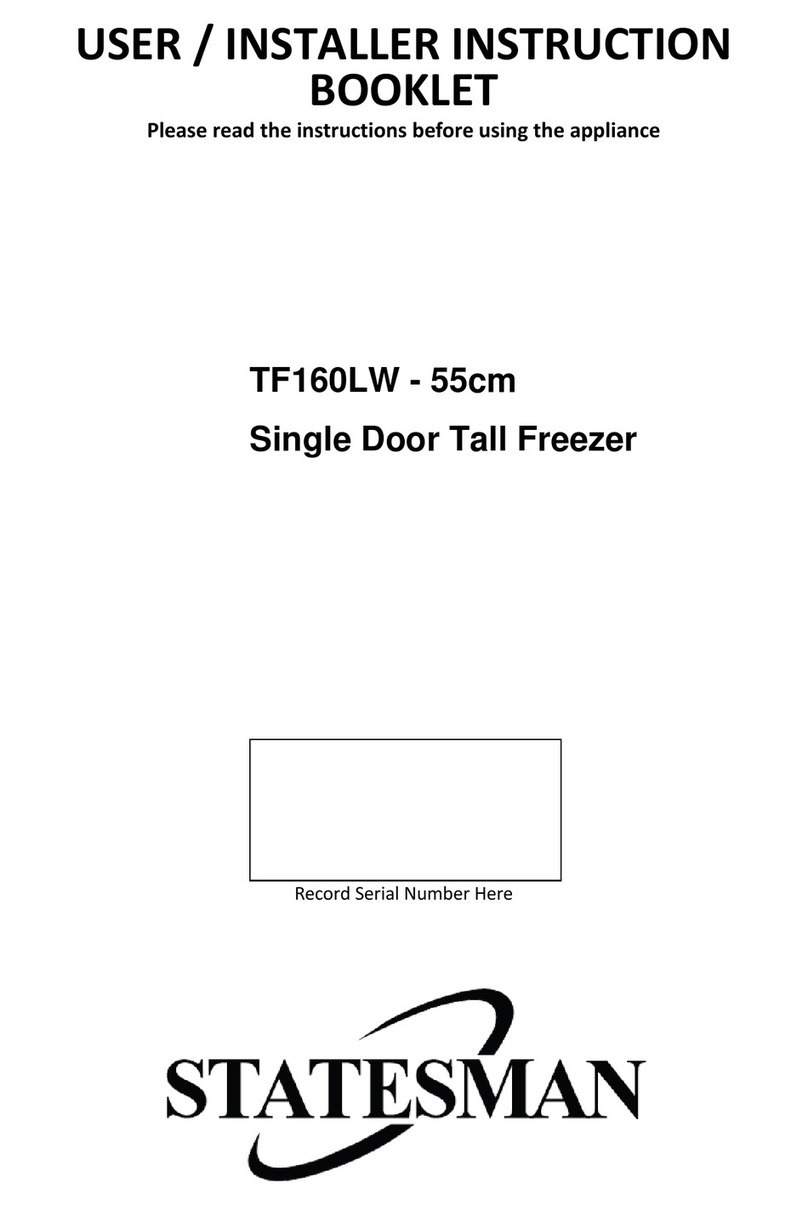
STATESMAN
STATESMAN TF160LW User manual

STATESMAN
STATESMAN F1654APWE User manual

STATESMAN
STATESMAN TF160LWE User manual

STATESMAN
STATESMAN LF1355W User manual

STATESMAN
STATESMAN U355W User manual
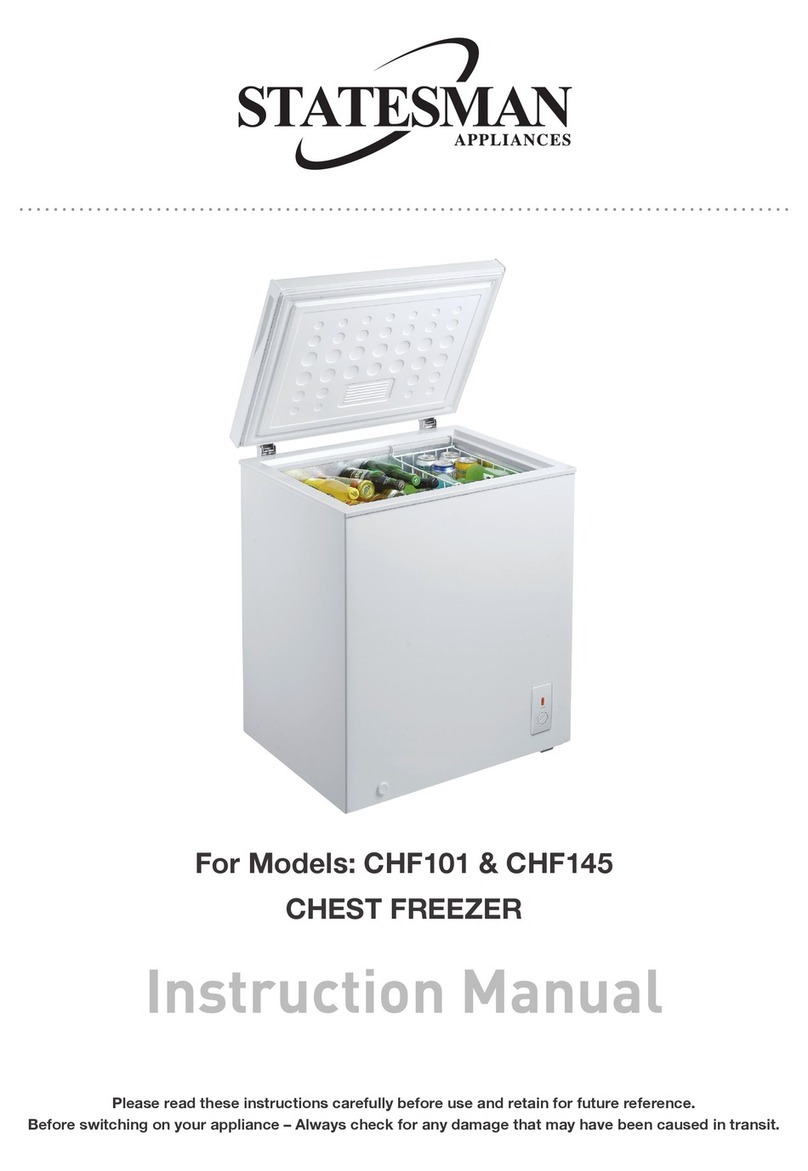
STATESMAN
STATESMAN CHF101 User manual
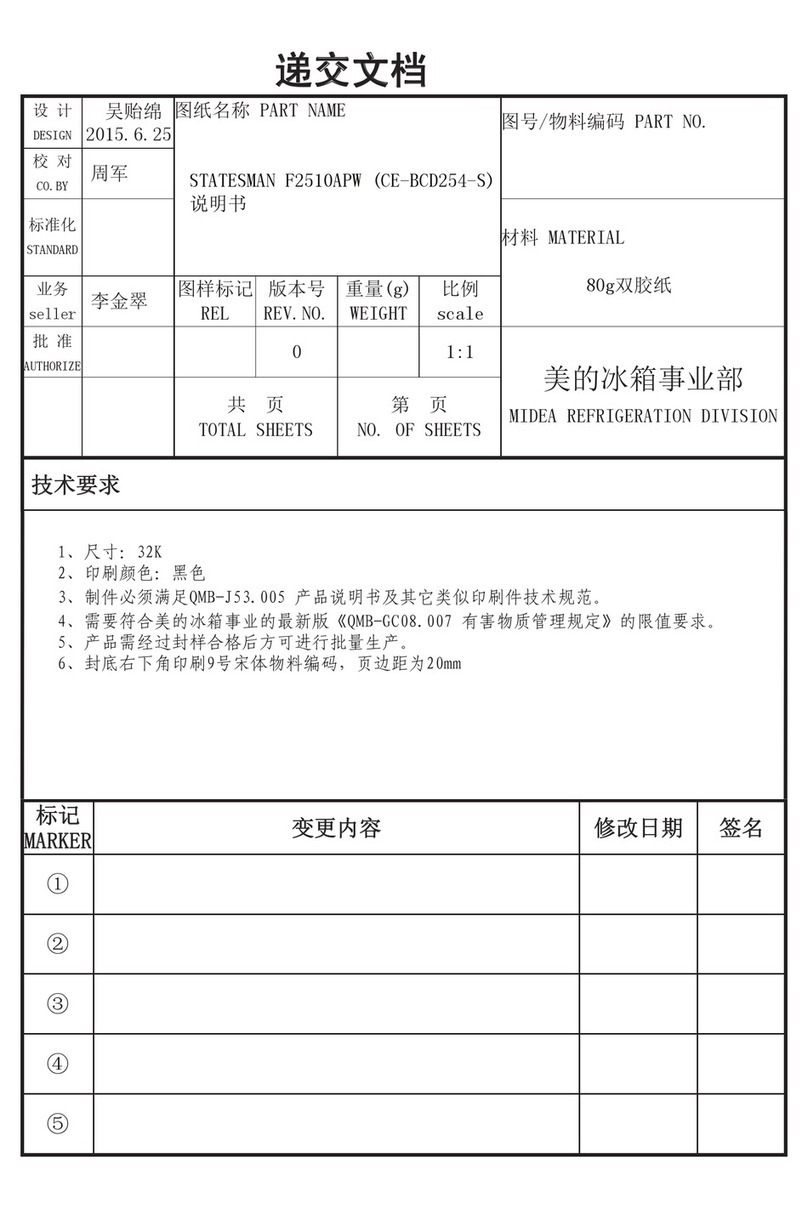
STATESMAN
STATESMAN F2510APW User manual

STATESMAN
STATESMAN CHF102 User manual

